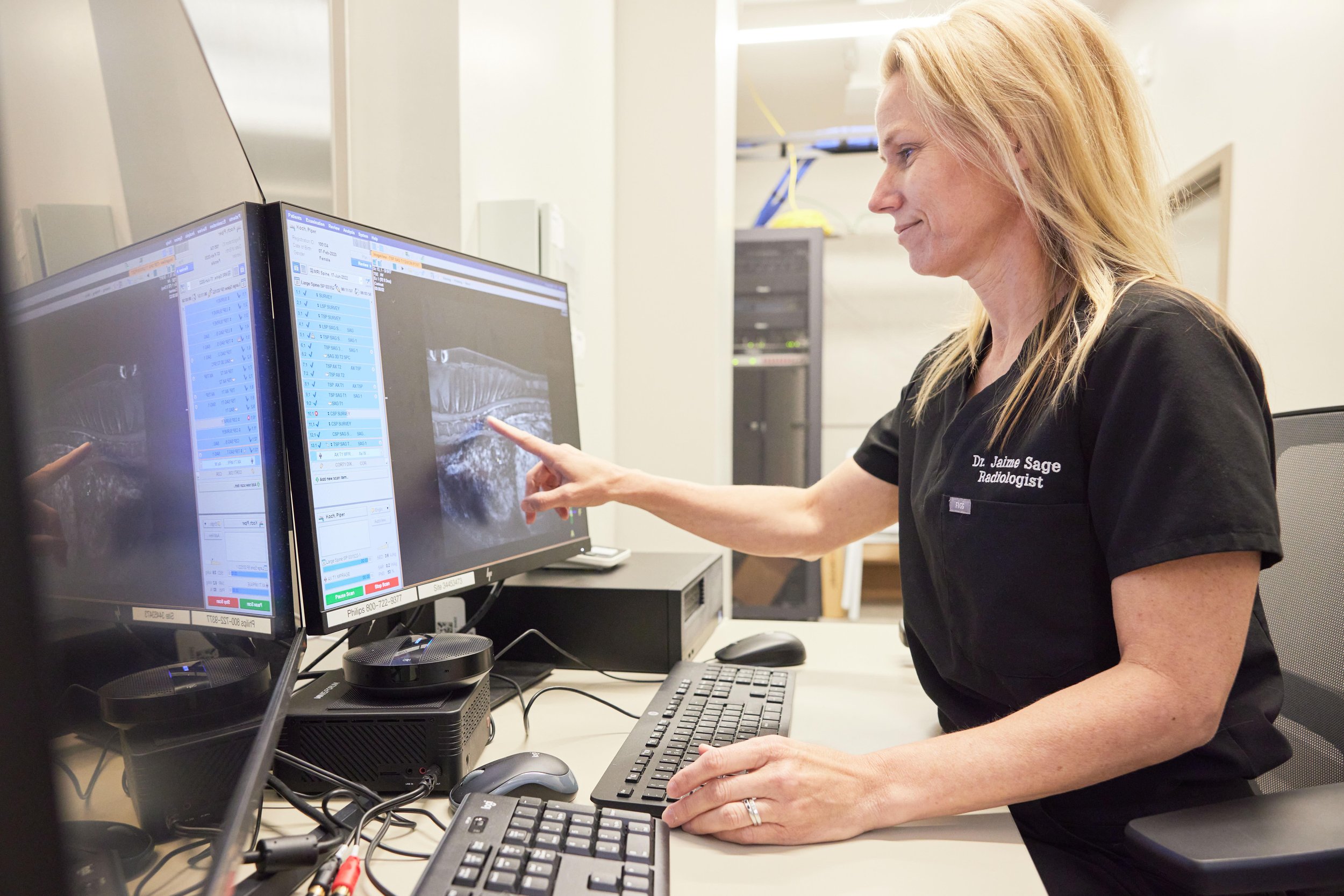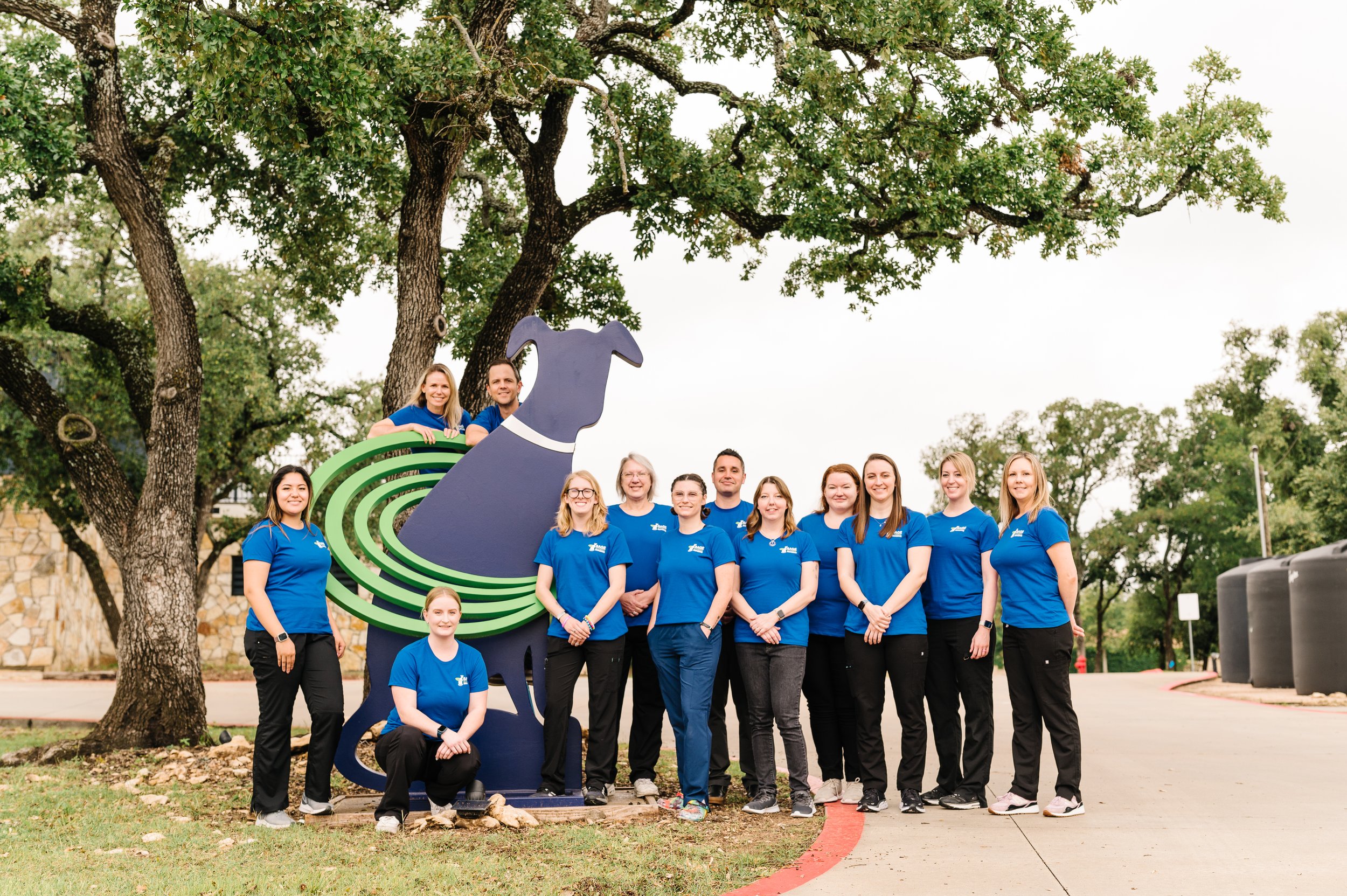5 Crucial Ways Outpatient Veterinary Imaging Fills a Role
In this blog, you’ll learn about a remarkable aspect of veterinary care–outpatient veterinary imaging–and how it fills a crucial role in medicine for your pets. Join us as we explore how this invaluable tool has revolutionized diagnostics, enabling veterinarians to provide accurate diagnoses, effective treatment plans, and ultimately, a higher quality of life for our furry family members!
Outpatient veterinary imaging plays an important role in giving your pets the best possible care.
5 Reasons Outpatient Veterinary Imaging is Needed
How cool would it be if you could look beneath the surface of your pet's body, gaining insights that go beyond what meets the eye? Outpatient veterinary imaging has made this a reality, offering a non-invasive, pain-free means of peering into the inner workings of our pets.
This technology encompasses a range of diagnostic tools, such as X-rays, ultrasounds, CT scans, and MRIs, each with its unique strengths and applications. Let's dive into five ways imaging modalities contribute to the exceptional care our pets deserve.
It provides an accurate diagnosis for effective treatment. Like humans, our furry friends can have health issues that aren't always obvious at first. Outpatient veterinary imaging comes to the rescue, giving our amazing veterinarians a peek inside their little bodies. It helps them spot anything unusual that might be causing discomfort or affecting their overall well-being. With these detailed images, vets can diagnose accurately and create personalized treatment plans. Whether it's finding fractures, spotting tumors, or checking organ health, these imaging techniques play a crucial role in guiding the right treatments at the right time. It's the superpower that helps our furry pals feel better in no time!
It is non-invasive and provides a comfortable experience. One of the best things about outpatient veterinary imaging is how gentle and non-invasive it is. Unlike those scary procedures that can make our furry pals anxious and uncomfortable, imaging techniques are here to save the day! Whether it's a gentle ultrasound wand or a quick X-ray session, these procedures make our pets feel relaxed and at ease. Their comfort is a top priority for veterinarians. By keeping stress levels low and making them feel comfy, we're building a strong bond of trust between our pets and their amazing veterinary caregivers. It's all about creating a positive experience that leaves our furry friends feeling safe and loved.
It helps with the early detection of health conditions. Regarding our pets' well-being, prevention is the ultimate power! That's where outpatient veterinary imaging comes to the rescue, playing a role in early disease detection. Regular screenings, like X-rays and ultrasounds, can uncover hidden problems or risks before signs or symptoms appear. This early detection not only increases the chances of successful treatment but also means less invasive procedures, less discomfort, and a brighter outlook for our furry pals.
It helps guide surgical procedures. In cases where surgical intervention is necessary, outpatient veterinary imaging is an indispensable guide for veterinarians. By providing detailed anatomical information, imaging modalities assist surgeons in planning procedures with precision and efficiency. From identifying optimal surgical approaches to guiding delicate procedures, such as tumor removals or joint surgeries, imaging tools greatly enhance the safety and success rates of surgical interventions. This translates into shorter recovery times and better post-operative outcomes for our cherished companions.
It supports monitoring of treatment progress and post-operative care. Outpatient veterinary imaging is not only beneficial in diagnosis and intervention planning but also in monitoring treatment progress and post-operative care. Regular imaging sessions can help veterinarians track the effectiveness of treatments, ensuring that interventions are working as expected. Furthermore, these imaging techniques aid in post-operative follow-ups, allowing veterinarians to evaluate the healing process and make any necessary adjustments to the treatment plan. The ability to visualize changes over time provides valuable insights into the overall success of the treatment and facilitates more targeted care.
Now that you know why outpatient imaging services for dogs and cats are needed, let's dive deeper into the specific imaging modalities used. These include ultrasound, MRI, and CT scans. Below, you’ll further understand their unique benefits and applications.
Sage Veterinary Imaging radiologist performing an ultrasound.
Ultrasound
Ultrasound imaging is a widely utilized modality in veterinary medicine due to its versatility and non-invasive nature. By using high-frequency sound waves, veterinarians can create real-time images of soft tissues and organs, providing valuable insights into their structure and function.
Ultrasound is particularly advantageous for evaluating:
Abdominal organs, such as the liver, kidneys, and bladder
Conditions like urinary tract infections, gallstones, or tumors
Heart diseases and heart function
Blood flow
Pregnancy monitoring is another area where ultrasound shines, allowing veterinarians to visualize fetal development, confirm pregnancies, and estimate litter size. The ability to monitor pregnancies helps ensure the well-being of both the mother and her offspring.
Furthermore, ultrasound-guided procedures, such as biopsies or aspirations, provide precise targeting, minimizing invasiveness and reducing the risks associated with these interventions. Ultrasound's real-time imaging capabilities, combined with its portability, make it a valuable tool in emergencies, as it enables rapid assessment of traumatic injuries or potential internal bleeding.
Magnetic Resonance Imaging (MRI)
MRI is a highly sophisticated imaging modality that employs a strong magnetic field and radio waves to produce detailed cross-sectional images of the body. While MRI is less commonly available in outpatient veterinary practices compared to other modalities, its capabilities make it invaluable in specific cases.
MRI is particularly well-suited for examining:
Brain tumors
Spinal cord injuries
Neurological conditions
Inflammatory diseases affecting the nervous system
Musculoskeletal disorders, like joint diseases, ligament injuries, and bone infections
At Sage Veterinary Imaging, we use 3T MRI which gets two times the resolution in half the time (when compared to older models and modalities).
Dr. Curtis reviewing the visual results of a CT scan.
Computed Tomography (CT)
CT scans combine X-ray technology with advanced computer processing to generate detailed cross-sectional images of the body. CT imaging provides a three-dimensional view, allowing for precise visualization of organs, bones, and soft tissues.
CT scans are particularly advantageous when evaluating:
Complex anatomical regions
Minute structural abnormalities.
Tumors or abscesses
Traumatic injuries
CT is also very effective in pre-surgical planning because it offers detailed insights into the affected area.
Sage Veterinary Imaging in Round Rock, Texas
Sage Veterinary Imaging in Texas and Utah
Outpatient veterinary imaging keeps getting better and better as technology advances. Exciting research in areas like molecular imaging and functional imaging holds incredible promise for the future, making veterinary imaging even more powerful and improving outcomes for our furry pals.
When it comes to outpatient veterinary imaging, Sage Veterinary Imaging has an amazing trio of tools: ultrasound, MRI, and CT scans. With these fantastic imaging modalities, veterinarians can offer precise diagnoses, guide treatments, and give our beloved pets the best possible care they deserve.
Sage Veterinary Imaging operates in Round Rock, Texas and Sandy, Utah and we are here to help get answers for your pet. Ultimately, we aim to make the most informed decisions to help your pet. For more information on where to find an MRI or CT scan for dogs in Texas or Utah, go to our Services page to learn more.




